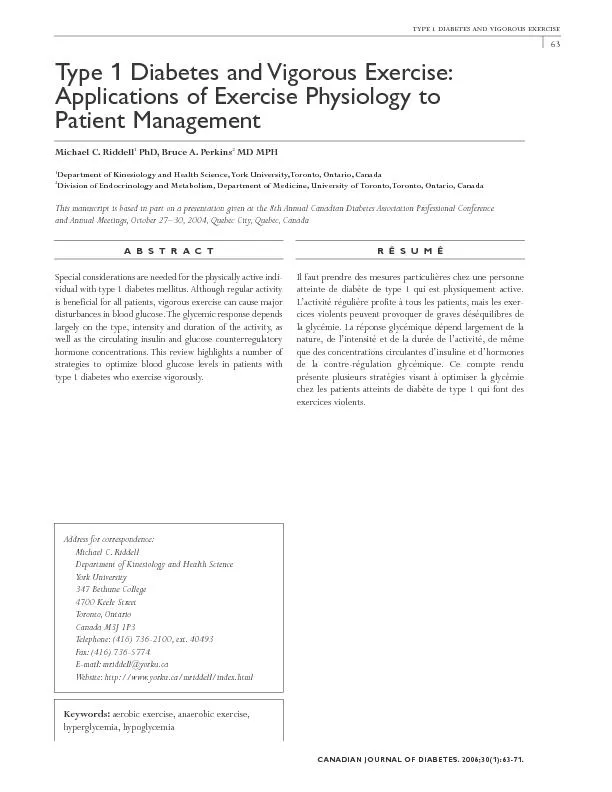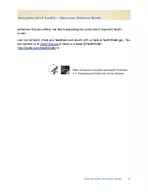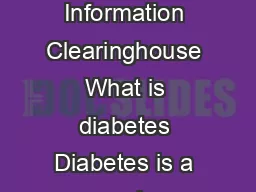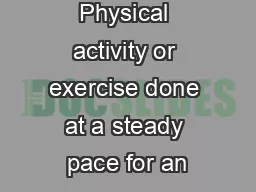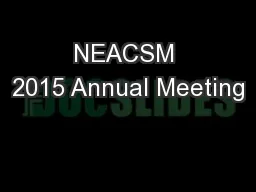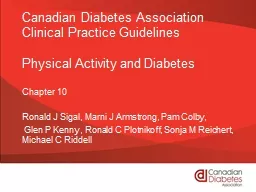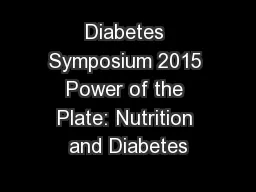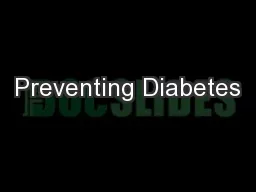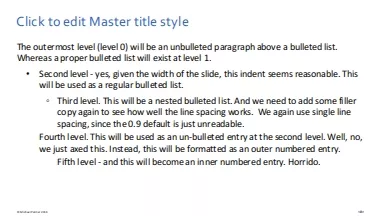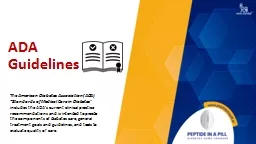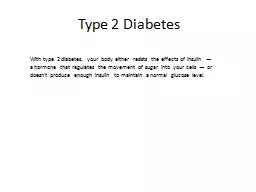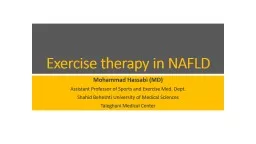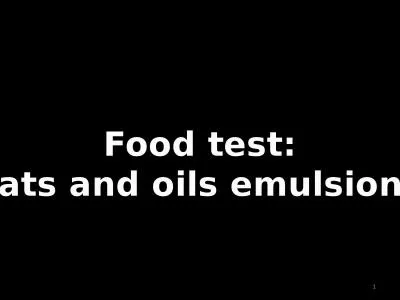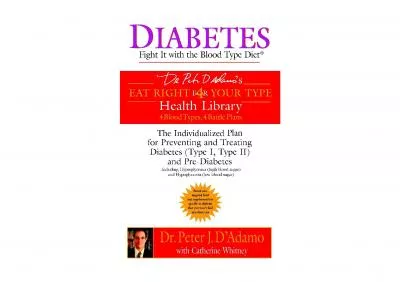PDF-diabetes and vigorous exercise
Author : tawny-fly | Published Date : 2016-08-21
CANADIAN JOURNAL OF DIABETES20063016371 pecial considerations are needed for the physically active individual with type 1 diabetes mellitusAlthough regular activityis
Presentation Embed Code
Download Presentation
Download Presentation The PPT/PDF document "diabetes and vigorous exercise" is the property of its rightful owner. Permission is granted to download and print the materials on this website for personal, non-commercial use only, and to display it on your personal computer provided you do not modify the materials and that you retain all copyright notices contained in the materials. By downloading content from our website, you accept the terms of this agreement.
diabetes and vigorous exercise: Transcript
Download Rules Of Document
"diabetes and vigorous exercise"The content belongs to its owner. You may download and print it for personal use, without modification, and keep all copyright notices. By downloading, you agree to these terms.
Related Documents

